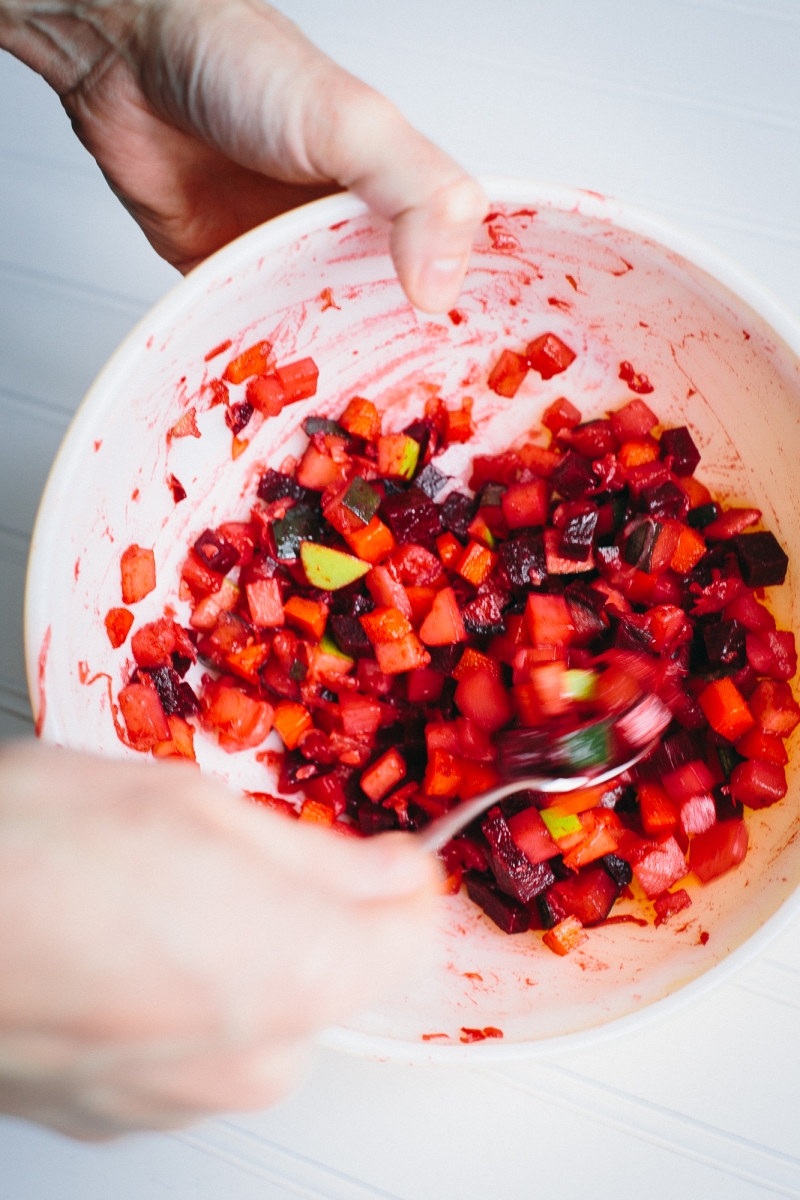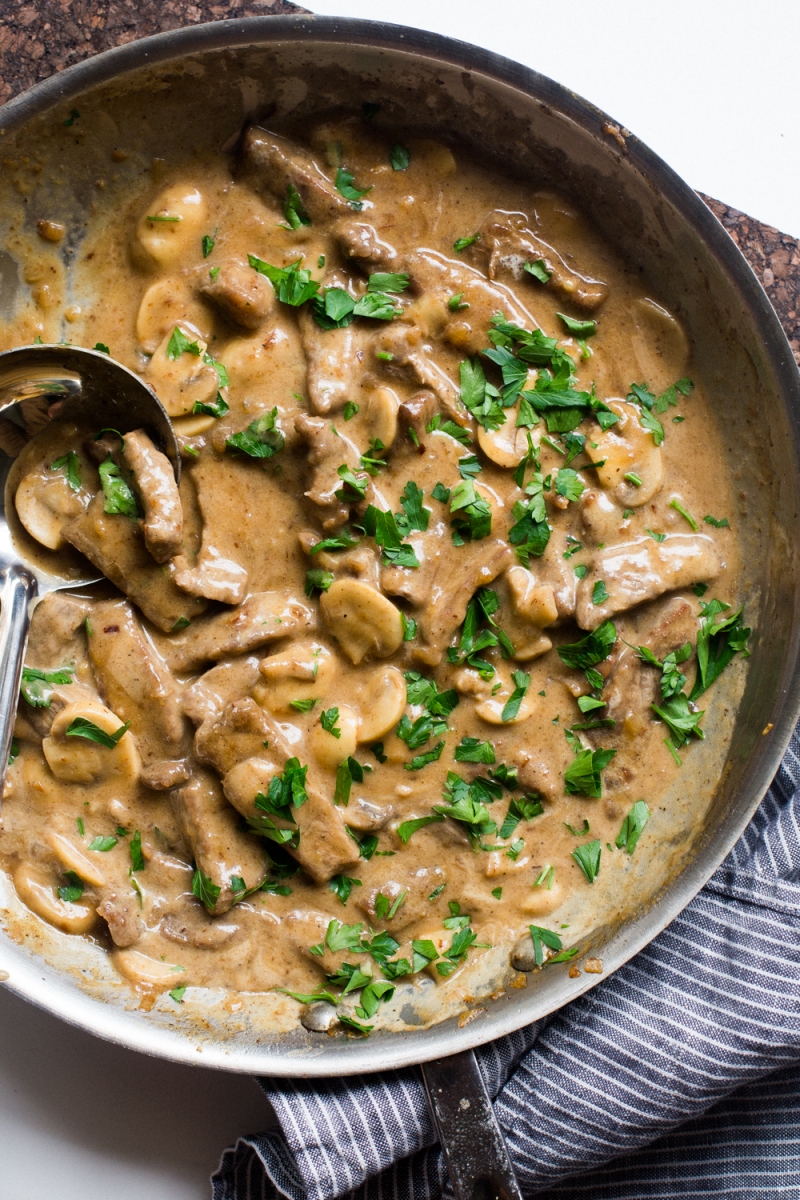
Every once in awhile, I get a big craving for beets. The craving doesn’t hit me often, but when it does, I typically turn to my Vinegret (винегрет) recipe from The Ancestral Table. So without further ado, here is the text from the book:
Vinegret is the name of a Russian salad that is likely not of Russian origin, but rather borrowed from German or Scandinavian cuisine. In traditional Russian cuisine, salads were pretty rare. Vinegret is often cited as the first Russian salad, first mentioned in the 19th century.
Another Russian favorite is Olivier salad, which has a much more interesting history. It was invented by Lucien Olivier, a Belgian chef working in Moscow in the 1860s. The original recipe was a closely held secret and was never truly duplicated. Documents reveal that the salad likely included caviar, crawfish tails, aspic, and veal tongue. Over the years, these rare ingredients were replaced by common ones. Instructions for making Olivier Salad are also found below, as the method is similar.





